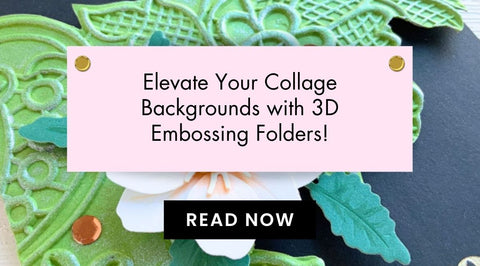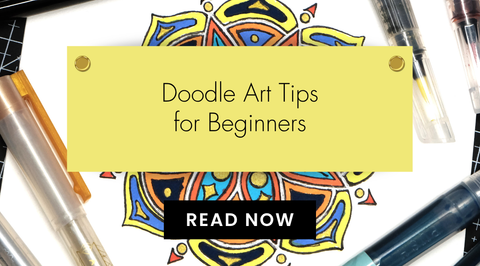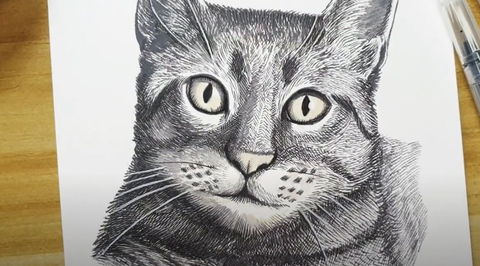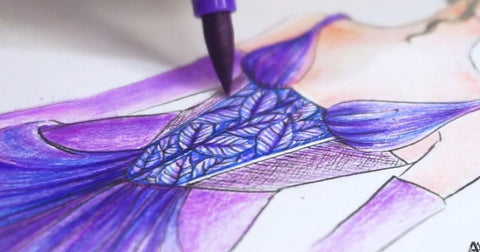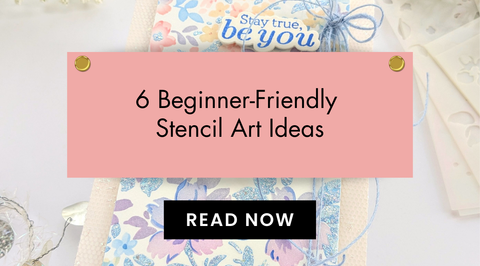5 Common Mistakes to Avoid While Painting with Gouache
Last Updated: July 29, 2024
Get ready to experience something extraordinary on the Creative Corner blog! We're shaking things up with our Gouache Artists' Showcase – a unique guest series where talented gouache artists take the spotlight instead of our usual writers.

Dive into a world of painting tips, tricks, and knowledge from gouache experts - where colors come alive, brushstrokes tell tales, and creativity knows no limits. Let's welcome Advaita Raut!

I’m going, to be honest with you. When I first began working with gouache paint, the experience was frustrating for me. My colors used to be all muddy, my blending was streaky, and my finished painting nowhere resembled the picture I’d hoped to replicate. Sounds familiar?
My number one mistake was expecting to get it right on the first try. Each night after work, I tried to emulate trending gouache artists at the time unsuccessfully. Instead, I should have learned the basics and tried to find my own style. But what if I told you that beyond the initial hurdles, gouache can be a joyful and rewarding medium to work with?
All that creamy texture, the paint mixing, the first stroke of paint on paper, and watching your idea come to life is an exciting experience every beginner gouache artist should look forward to. I’m going to tell you all about my mistakes with gouache, so you know what’s coming!
Ready? Here we go:
Mistake #1: Painting Over Wet Layers
Imagine this: You’re painting a sunset. You’ve painted the base layer on the paper. You proceed to add a cloud to this layer, but the paint’s still wet. Your base layer mixes in with your cloud, turning your dreamy cloud into an unsightly blob. Well, been there, done that.
While gouache is a faster drying medium than watercolor, it needs to dry completely before adding more layers. If you paint over a layer that hasn’t fully dried, you risk lifting the colors of the layer underneath.
Remember those muddy layers I was talking about before? That’s what happens when you paint over a layer that hasn’t properly dried.

Mistake #2: Diluting the Paint Too Much
The best thing about gouache paint is its luscious, creamy texture, which is perfect for expressive brushstrokes. Adding too much water to it can beat this purpose.
Remember, gouache isn’t the same as watercolor. You want more opaque layers with gouache paint, so the gouache-to-water ratio has to be such that it yields a creamy, not watery consistency. Mixing too much water can make your gouache painting look streaky (you don’t want to see spots of white paper underneath).

When blending two gouache colors, I recommend mixing white instead of water. If you must add water, add it in tiny quantities until you’re satisfied with how the color spreads on the paper.
Mistake #3: Using Too Many Colors
As a new artist, it’s understandable to be excited about using every color on your gouache palette (double the temptation for Artistry by Altenew’s gorgeous Strolling Through New York Colors!).
However, using too many colors in one painting can cause visual disharmony. Your painting composition should be pleasing to the eye, and using too many colors can make it jarring. One trick to avoid this is to use a basic cool-warm palette to balance out the colors.
Try limiting your colors to five or fewer colors for a pleasing composition. For instance, check out the below painting where I’ve used the following colors from Artistry by Altenew’s Strolling Through New York Gouache Paint Set:
- Baby Pink
- Lavender
- Primary Cyan

The warm pink tone contrasts well against the cool cyan and lavender, making for a pleasing sky palette.
Mistake #4: Ignoring Color Values
Did you know that gouache colors change their value when they dry?
Light colors become darker when they dry, and dark colors become lighter.
For example, the yellow you’ve decided to use for flowers may seem light on your palette at first. But it will not stand out the way you’d expected on paper, because it will get darker as it dries. Keep this in mind while mixing your colors.
Mistake #5: Using Color Directly Out of the Tube
It’s very tempting to use gouache colors right out of the tube, but don’t make this mistake. Mixing colors on your palette is the only way to recognize the values you need for your painting. It also teaches you about color theory, which improves the composition of your painting. As illustrated below, you can use a palette knife on a flat surface to mix your colors.

Final Words
Trying a new medium can be scary. There’s a lot to be intimidated about, and thoughts of failure don’t make things easier. But being aware of the mistakes you make will only help you improve.

The great thing about gouache is that it’s a forgiving medium. It can be reactivated with water, so no matter what mistake you make, you can almost always work around it! The most important mistake you want to avoid with gouache is rushing the process. Painting should be a mindful experience, so focus on the journey!


